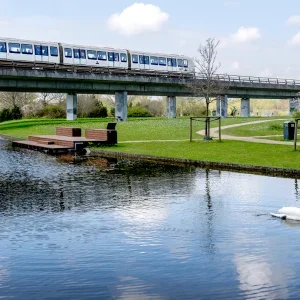The score of 93 corresponds to a “Leading” rating, the highest possible in the scheme.
CRL Ltd chief executive Dr Sean Sweeney said the independent assessment from the Australia-based ISC was an endorsement of the values and hard work the CRL and Link Alliance team brought to New Zealand’s largest transport infrastructure project.

“We have worked our hardest to make the CRL an exemplar project, to set a new higher benchmark for construction, workplace safety, environmental sustainability and to form partnerships in our community to provide opportunities for people who face barriers to entering the workforce,” said Sweeney.
The ISC independent assessors highlighted three innovations that were critical to award the highest possible rating: incorporation of Maori cultural values into the IS framework; the use of BIM to track the carbon footprint during design; and the use of battery-powered multi-service vehicles with regenerative braking to supply materials to the TBM.
Other highlights include:
- an 18% reduction in the footprint of concrete used, equivalent to eliminating more than 7,000 truckloads of concrete
- reducing mined tunnelling and associated concrete and steel by 11% in the redesigned Karanga-a-Hape Station
- maximising the use of grid electricity during construction to achieve around 80% reductions compared to diesel generators
- minimising use of carbon-intensive shotcrete and reinforcing steel associated with mined tunnelling and maximising use of lower-carbon bored and cut-and-cover tunnels at Maungawhau
The assessors also focused on the delivery of positive social outcomes, particularly the efforts to provide meaningful training and employment to Maori, Pasifika and youth.
CRL Ltd and Link Alliance implemented a 16-week paid internship for young people, including training and support, career development, and a mentoring and pastoral care programme. They also created supply chain opportunities for Maori and Pasifika businesses, social enterprises and socially innovative businesses.
“It is particularly pleasing to see that for the first time the ISC has incorporated cultural values into its Infrastructure Sustainability technical manual and is now sharing it across Australasia and with its partners around the world,” said Sweeney.







